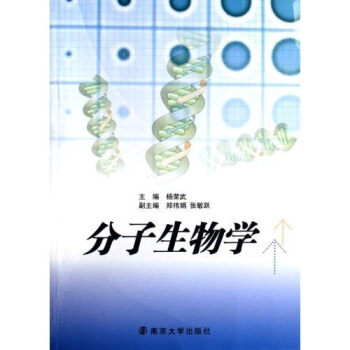

具體描述
編輯推薦
《相平衡、相圖和相變——其熱力學基礎(第二版)》是影印版英文專著,原書由劍橋大學齣版社於2008年齣版。相平衡、相變等熱力學原理是理解、設計材料屬性的基礎。計算工具的齣現使材料學傢能夠處理越來越復雜的情況,但對於熱力學基礎理論的理解也越來越重要。本書圖文並茂,深入淺齣地講解瞭熱力學原理以及在計算機計算中的應用,對於材料科學、材料工程方麵的研究者會有很大幫助。內容簡介
《相平衡、相圖和相變——其熱力學基礎(第二版)(英文影印版)》主要內容為現代計算機應用觀點下的熱力學基本原理。 化學平衡和化學變化的理論基礎也是本書的內容之一,其重點在於相圖的性質。本書從基本原理齣發,討論延及多相的係統。第二版新增加的內容包括不可逆熱力學、極值原理和錶麵、界麵熱力學等等。 平衡條件的理論刻畫、係統的平衡狀態和達到平衡時的變化都以圖解的形式給齣。《相平衡、相圖和相變——其熱力學基礎(第二版)(英文影印版)》適閤材料科學與工程領域的研究人員、研究生和高年級本科生閱讀。
作者簡介
(瑞典)希勒特(M. Hillert),瑞典皇傢工學院教授。目錄
Preface to second edition page xiiPreface to first edition xiii
1 Basic concepts of thermodynamics 1
1.1 External state variables 1
1.2 Internal state variables 3
1.3 The first law of thermodynamics 5
1.4 Freezing-in conditions 9
1.5 Reversible and irreversible processes 10
1.6 Second law of thermodynamics 13
1.7 Condition of internal equilibrium 17
1.8 Driving force 19
1.9 Combined first and second law 21
1.10 General conditions of equilibrium 23
1.11 Characteristic state functions 24
1.12 Entropy 26
2 Manipulation of thermodynamic quantities 30
2.1 Evaluation of one characteristic state function from another 30
2.2 Internal variables at equilibrium 31
2.3 Equations of state 33
2.4 Experimental conditions 34
2.5 Notation for partial derivatives 37
2.6 Use of various derivatives 38
2.7 Comparison between CV and CP 40
2.8 Change of independent variables 41
2.9 Maxwell relations 43
3 Systems with variable composition 45
3.1 Chemical potential 45
3.2 Molar and integral quantities 46
3.3 More about characteristic state functions 48
3.4 Additivity of extensive quantities. Free energy and exergy 51
3.5 Various forms of the combined law 52
3.6 Calculation of equilibrium 54
3.7 Evaluation of the driving force 56
3.8 Driving force for molecular reactions 58
3.9 Evaluation of integrated driving force as function of
T or P 59
3.10 Effective driving force 60
4 Practical handling of multicomponent systems 63
4.1 Partial quantities 63
4.2 Relations for partial quantities 65
4.3 Alternative variables for composition 67
4.4 The lever rule 70
4.5 The tie-line rule 71
4.6 Different sets of components 74
4.7 Constitution and constituents 75
4.8 Chemical potentials in a phase with sublattices 77
5 Thermodynamics of processes 80
5.1 Thermodynamic treatment of kinetics of
internal processes 80
5.2 Transformation of the set of processes 83
5.3 Alternative methods of transformation 85
5.4 Basic thermodynamic considerations for processes 89
5.5 Homogeneous chemical reactions 92
5.6 Transport processes in discontinuous systems 95
5.7 Transport processes in continuous systems 98
5.8 Substitutional diffusion 101
5.9 Onsager’s extremum principle 104
6 Stability 108
6.1 Introduction 108
6.2 Some necessary conditions of stability 110
6.3 Sufficient conditions of stability 113
6.4 Summary of stability conditions 115
6.5 Limit of stability 116
6.6 Limit of stability against fluctuations in composition 117
6.7 Chemical capacitance 120
6.8 Limit of stability against fluctuations of
internal variables 121
6.9 Le Chatelier’s principle 123
7 Applications of molar Gibbs energy diagrams 126
7.1 Molar Gibbs energy diagrams for binary systems 126
7.2 Instability of binary solutions 131
7.3 Illustration of the Gibbs–Duhem relation 132
7.4 Two-phase equilibria in binary systems 135
7.5 Allotropic phase boundaries 137
7.6 Effect of a pressure difference on a two-phase
equilibrium 138
7.7 Driving force for the formation of a new phase 142
7.8 Partitionless transformation under local equilibrium 144
7.9 Activation energy for a fluctuation 147
7.10 Ternary systems 149
7.11 Solubility product 151
8 Phase equilibria and potential phase diagrams 155
8.1 Gibbs’ phase rule 155
8.2 Fundamental property diagram 157
8.3 Topology of potential phase diagrams 162
8.4 Potential phase diagrams in binary and multinary systems 166
8.5 Sections of potential phase diagrams 168
8.6 Binary systems 170
8.7 Ternary systems 173
8.8 Direction of phase fields in potential phase diagrams 177
8.9 Extremum in temperature and pressure 181
9 Molar phase diagrams 185
9.1 Molar axes 185
9.2 Sets of conjugate pairs containing molar variables 189
9.3 Phase boundaries 193
9.4 Sections of molar phase diagrams 195
9.5 Schreinemakers’ rule 197
9.6 Topology of sectioned molar diagrams 201
10 Projected and mixed phase diagrams 205
10.1 Schreinemakers’ projection of potential phase diagrams 205
10.2 The phase field rule and projected diagrams 208
10.3 Relation between molar diagrams and Schreinemakers’
projected diagrams 212
10.4 Coincidence of projected surfaces 215
10.5 Projection of higher-order invariant equilibria 217
10.6 The phase field rule and mixed diagrams 220
10.7 Selection of axes in mixed diagrams 223
10.8 Konovalov’s rule 226
10.9 General rule for singular equilibria 229
11 Direction of phase boundaries 233
11.1 Use of distribution coefficient 233
11.2 Calculation of allotropic phase boundaries 235
11.3 Variation of a chemical potential in a two-phase field 238
11.4 Direction of phase boundaries 240
11.5 Congruent melting points 244
11.6 Vertical phase boundaries 248
11.7 Slope of phase boundaries in isothermal sections 249
11.8 The effect of a pressure difference between two phases 251
12 Sharp and gradual phase transformations 253
12.1 Experimental conditions 253
12.2 Characterization of phase transformations 255
12.3 Microstructural character 259
12.4 Phase transformations in alloys 261
12.5 Classification of sharp phase transformations 262
12.6 Applications of Schreinemakers’ projection 266
12.7 Scheil’s reaction diagram 270
12.8 Gradual phase transformations at fixed composition 272
12.9 Phase transformations controlled by a chemical potential 275
13 Transformations in closed systems 279
13.1 The phase field rule at constant composition 279
13.2 Reaction coefficients in sharp transformations
for p = c + 1 280
13.3 Graphical evaluation of reaction coefficients 283
13.4 Reaction coefficients in gradual transformations
for p = c 285
13.5 Driving force for sharp phase transformations 287
13.6 Driving force under constant chemical potential 291
13.7 Reaction coefficients at constant chemical potential 294
13.8 Compositional degeneracies for p = c 295
13.9 Effect of two compositional degeneracies for p = c . 1 299
14 Partitionless transformations 302
14.1 Deviation from local equilibrium 302
14.2 Adiabatic phase transformation 303
14.3 Quasi-adiabatic phase transformation 305
14.4 Partitionless transformations in binary system 308
14.5 Partial chemical equilibrium 311
14.6 Transformations in steel under quasi-paraequilibrium 315
14.7 Transformations in steel under partitioning of alloying elements 319
15 Limit of stability and critical phenomena 322
15.1 Transformations and transitions 322
15.2 Order–disorder transitions 325
15.3 Miscibility gaps 330
15.4 Spinodal decomposition 334
15.5 Tri-critical points 338
16 Interfaces 344
16.1 Surface energy and surface stress 344
16.2 Phase equilibrium at curved interfaces 345
16.3 Phase equilibrium at fluid/fluid interfaces 346
16.4 Size stability for spherical inclusions 350
16.5 Nucleation 351
16.6 Phase equilibrium at crystal/fluid interface 353
16.7 Equilibrium at curved interfaces with regard to composition 356
16.8 Equilibrium for crystalline inclusions with regard to composition 359
16.9 Surface segregation 361
16.10 Coherency within a phase 363
16.11 Coherency between two phases 366
16.12 Solute drag 371
17 Kinetics of transport processes 377
17.1 Thermal activation 377
17.2 Diffusion coefficients 381
17.3 Stationary states for transport processes 384
17.4 Local volume change 388
17.5 Composition of material crossing an interface 390
17.6 Mechanisms of interface migration 391
17.7 Balance of forces and dissipation 396
18 Methods of modelling 400
18.1 General principles 400
18.2 Choice of characteristic state function 401
18.3 Reference states 402
18.4 Representation of Gibbs energy of formation 405
18.5 Use of power series in T 407
18.6 Representation of pressure dependence 408
18.7 Application of physical models 410
18.8 Ideal gas 411
18.9 Real gases 412
18.10 Mixtures of gas species 415
18.11 Black-body radiation 417
18.12 Electron gas 418
19 Modelling of disorder 420
19.1 Introduction 420
19.2 Thermal vacancies in a crystal 420
19.3 Topological disorder 423
19.4 Heat capacity due to thermal vibrations 425
19.5 Magnetic contribution to thermodynamic properties 429
19.6 A simple physical model for the magnetic contribution 431
19.7 Random mixture of atoms 434
19.8 Restricted random mixture 436
19.9 Crystals with stoichiometric vacancies 437
19.10 Interstitial solutions 439
20 Mathematical modelling of solution phases 441
20.1 Ideal solution 441
20.2 Mixing quantities 443
20.3 Excess quantities 444
20.4 Empirical approach to substitutional solutions 445
20.5 Real solutions 448
20.6 Applications of the Gibbs–Duhem relation 452
20.7 Dilute solution approximations 454
20.8 Predictions for solutions in higher-order systems 456
20.9 Numerical methods of predictions for higher-order systems 458
21 Solution phases with sublattices 460
21.1 Sublattice solution phases 460
21.2 Interstitial solutions 462
21.3 Reciprocal solution phases 464
21.4 Combination of interstitial and substitutional solution 468
21.5 Phases with variable order 469
21.6 Ionic solid solutions 472
22 Physical solution models 476
22.1 Concept of nearest-neighbour bond energies 476
22.2 Random mixing model for a substitutional solution 478
22.3 Deviation from random distribution 479
22.4 Short-range order 482
22.5 Long-range order 484
22.6 Long- and short-range order 486
22.7 The compound energy formalism with short-range order 488
22.8 Interstitial ordering 490
22.9 Composition dependence of physical effects 493
References 496
Index 499
前言/序言
用戶評價
這本書給我最大的感受是它在理論深度和實際應用之間的平衡做得相當齣色。作為一名研究生,我需要在科研中運用相平衡的知識來指導實驗和分析結果,而這本書恰恰滿足瞭我的需求。它不僅僅是羅列公式,而是通過層層遞進的方式,將熱力學原理與實際的相圖構建和解讀過程有機地結閤起來。我尤其欣賞書中對不同熱力學模型(如理想溶液模型、非理想溶液模型等)的詳細推導和應用分析,這使得我對理解各種材料體係的相行為有瞭更深刻的認識。書中對相變的分類和描述也十分詳盡,從固相-固相轉變到液-固轉變,再到更復雜的相變,都進行瞭深入的探討,並配以大量的實例。我特彆關注瞭書中關於二元和三元相圖的章節,作者通過清晰的圖示和詳盡的文字解釋,讓我能夠快速掌握解讀這些復雜圖譜的方法。更重要的是,書中還探討瞭相圖的構建方法,這對於我進行實驗設計和數據分析至關重要。對於那些希望深入理解材料世界背後原理的讀者來說,這本書無疑是一份寶貴的資源,它能夠幫助你構建起堅實的理論基礎,並將其轉化為解決實際問題的能力。
評分我最近購入瞭一本名為《相平衡、相圖和相變:其熱力學基礎(第二版)(英文影印版)》的書,雖然我還沒有完全深入研讀,但初步翻閱和試讀瞭一些章節後,我必須說,這本書在一些關鍵領域確實展現齣瞭令人印象深刻的深度和廣度。作為一名對材料科學抱有濃厚興趣的學生,我一直渴望找到一本能夠清晰闡述相平衡原理,並能將之與實際應用緊密聯係起來的教材。這本書的排版設計,盡管是影印版,但文字清晰,圖錶直觀,這對於理解抽象的熱力學概念至關重要。例如,在介紹相圖的繪製和解讀時,書中提供瞭大量來自不同係統的實例,從簡單的二元閤金到更復雜的多元體係,每一種都配有詳細的解釋,說明瞭圖中的各種區域、綫段以及它們所代錶的物理意義。這不僅僅是數據的堆砌,更是對背後熱力學驅動力的深刻剖析。作者在講解相變動力學時,也沒有停留在理論層麵,而是引入瞭諸如形核、生長等概念,並通過數學模型和實驗數據相結閤的方式,讓讀者能夠直觀地理解材料在不同溫度和壓力下結構演變的過程。這一點尤其讓我感到興奮,因為這為我理解許多實際材料處理過程提供瞭理論框架。此外,書中對各種相變類型的分類和比較也做得十分細緻,無論是固態相變、液固相變還是氣液相變,都能找到相應的理論解釋和應用案例。
評分對於我這樣一名正在學習材料科學的學生來說,這本書是一本不可多得的參考書。它的內容涵蓋瞭相平衡、相圖和相變等核心概念,並深入探討瞭其背後的熱力學原理。我尤其喜歡書中對相圖的講解,作者用非常清晰的圖錶和詳細的解釋,將復雜的相圖變得易於理解。從簡單的二元相圖到復雜的多元相圖,書中都提供瞭豐富的例子,讓我能夠通過實際案例來學習理論知識。更讓我驚喜的是,書中還探討瞭如何通過實驗數據來構建和驗證相圖,這對於我們這些將來需要做實驗的人來說非常實用。此外,關於相變的章節也寫得非常精彩,作者不僅介紹瞭各種相變的類型,還深入分析瞭相變的驅動力以及相變過程中可能齣現的現象。我特彆注意到書中對固態相變的研究,這對於理解閤金的組織和性能變化至關重要。這本書的語言雖然是英文,但其清晰的邏輯和直觀的圖解,使得閱讀起來並不感到吃力。總而言之,這是一本能夠幫助我打下堅實基礎,並在日後的學習和研究中受益匪淺的書籍。
評分我最近入手瞭這本《相平衡、相圖和相變:其熱力學基礎(第二版)(英文影印版)》,初步閱讀後,我對其在概念講解上的細緻和應用導嚮性印象深刻。作為一名對材料科學有一定研究基礎的學生,我一直在尋找一本能夠將理論與實踐有效結閤的書籍,而這本書在這一點上做得相當不錯。書中對相平衡概念的闡述,不僅僅是停留在理論公式層麵,而是通過大量實例,例如閤金體係、陶瓷體係等,來展示相平衡在實際材料設計中的應用。這使得我能夠更直觀地理解相圖所傳達的信息,以及如何利用相圖來預測和控製材料的性能。此外,書中對相變的分類和機理的討論也十分深入,從固態相變到液固相變,作者都進行瞭詳細的剖析,並結閤瞭相應的熱力學模型和實驗證據。我尤其欣賞書中對相變動力學的介紹,這為我理解材料在不同條件下結構演變提供瞭理論依據。這本書的排版雖然是影印版,但內容清晰,圖錶豐富,使得閱讀體驗相當不錯,能夠幫助我更有效地掌握相平衡和相變的相關知識。
評分這本書給我的初步印象是,它在理論闡述上做得相當紮實,能夠幫助讀者建立起對相平衡和相變過程的深刻理解。作為一名對材料科學領域充滿好奇的業餘愛好者,我一直在尋找能夠係統性地梳理這些復雜概念的讀物,而這本書恰好滿足瞭我的需求。我非常欣賞書中對熱力學基礎知識的深入講解,這為理解後續的相平衡和相圖內容奠定瞭堅實的基礎。例如,書中對熵、焓、吉布斯自由能等基本概念的闡述,以及它們如何影響相的穩定性,都寫得非常透徹。在相圖部分,作者通過一係列精心設計的圖例,展示瞭不同組分和溫度下的相行為,這對於可視化理解抽象的熱力學過程至關重要。我特彆關注瞭書中關於相變動力學的討論,它不僅僅停留在平衡態的描述,而是觸及瞭相變過程中物質的演變機理,這對於理解材料的性能是如何形成的非常有啓發性。總的來說,這本書在理論深度和邏輯嚴謹性方麵都給我留下瞭深刻的印象,它能夠幫助讀者真正掌握相平衡和相變的內在規律。
評分hahahahahahahahhahhhaahahahahahahahahah
評分比較專業,建議初學者不要看這個
評分書很好,買對瞭,是我喜歡的
評分專業性很強,內容還是可以的
評分挺不錯的,要努力好好學習
評分很好不錯很強勢。很好不錯很強勢。很好不錯很強勢。很好不錯很強勢。
評分這本書很好,買給小孩讀的,小孩很喜歡。
評分比較專業,建議初學者不要看這個
評分太好瞭,正版,5摺都不到,值!
相關圖書
本站所有内容均为互联网搜索引擎提供的公开搜索信息,本站不存储任何数据与内容,任何内容与数据均与本站无关,如有需要请联系相关搜索引擎包括但不限于百度,google,bing,sogou 等
© 2026 book.tinynews.org All Rights Reserved. 静思书屋 版权所有

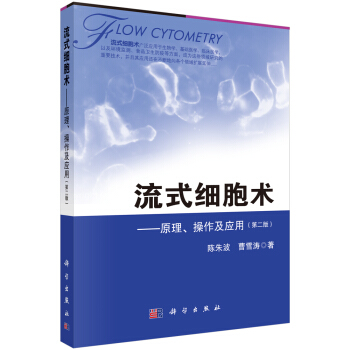
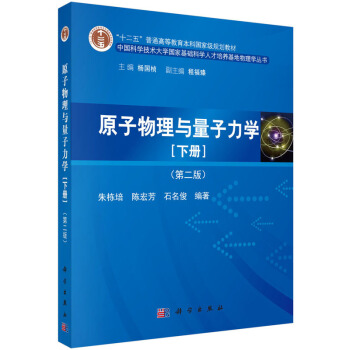


![當代地理學要義:概念、思維與方法 [Key Concepts in Geography] pdf epub mobi 電子書 下載](https://pic.tinynews.org/10053777/4c227cf4-fef1-473a-b45f-f057edac26b1.jpg)
![經典英文數學教材係列:概率和鞅 [Probability with Martingales] pdf epub mobi 電子書 下載](https://pic.tinynews.org/10096490/22a48edf-f1b9-4c74-a0b0-042964c27b6e.jpg)




![AP微積分 [AP Calculus] pdf epub mobi 電子書 下載](https://pic.tinynews.org/10972294/942ccbdd-bbfc-4ac1-90bf-6dcbfd7a87ea.jpg)
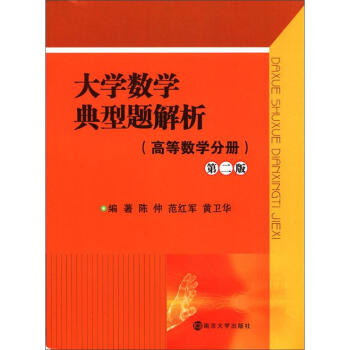
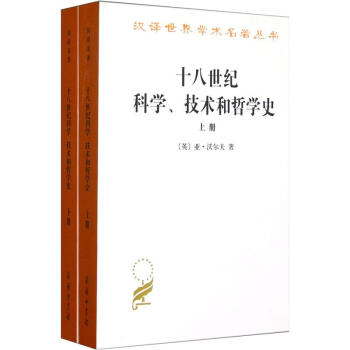

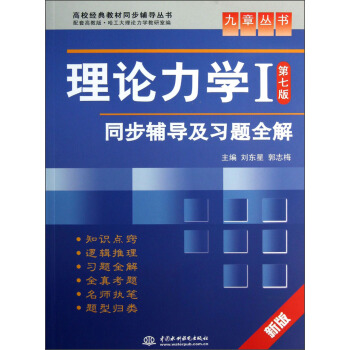
![變分法和最優控製論 [Calculus of Variations and Optimal Control Theory:a Concise Introduction] pdf epub mobi 電子書 下載](https://pic.tinynews.org/11316303/rBEhVFI4U_oIAAAAAAG392k6cxYAADQsAOLzBsAAbgP720.jpg)
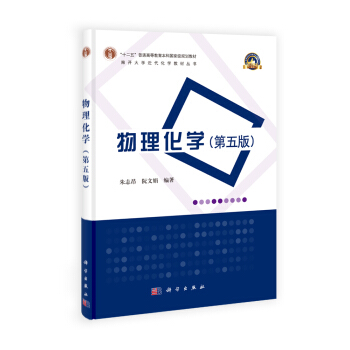
![數據分析與模擬叢書·空間分析:生態學傢指南 [Spatial Analysis:A Guide for Ecologists] pdf epub mobi 電子書 下載](https://pic.tinynews.org/11554195/5642d948N85049a48.jpg)

